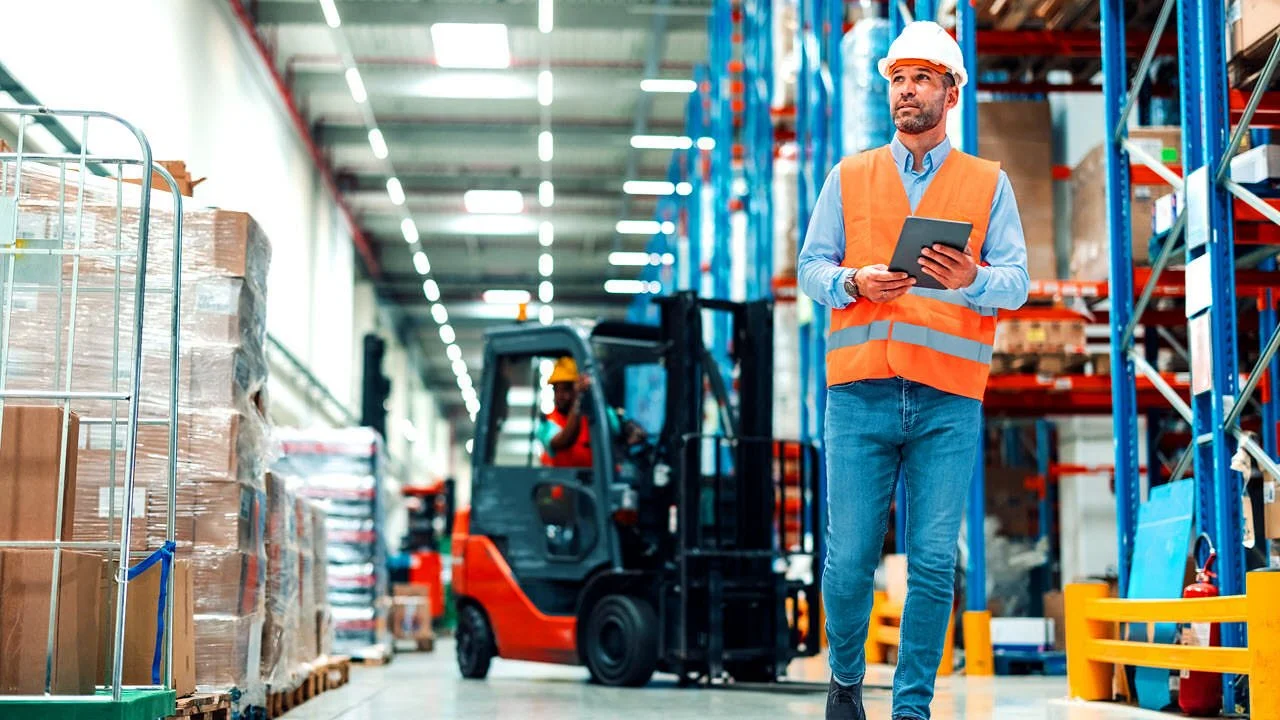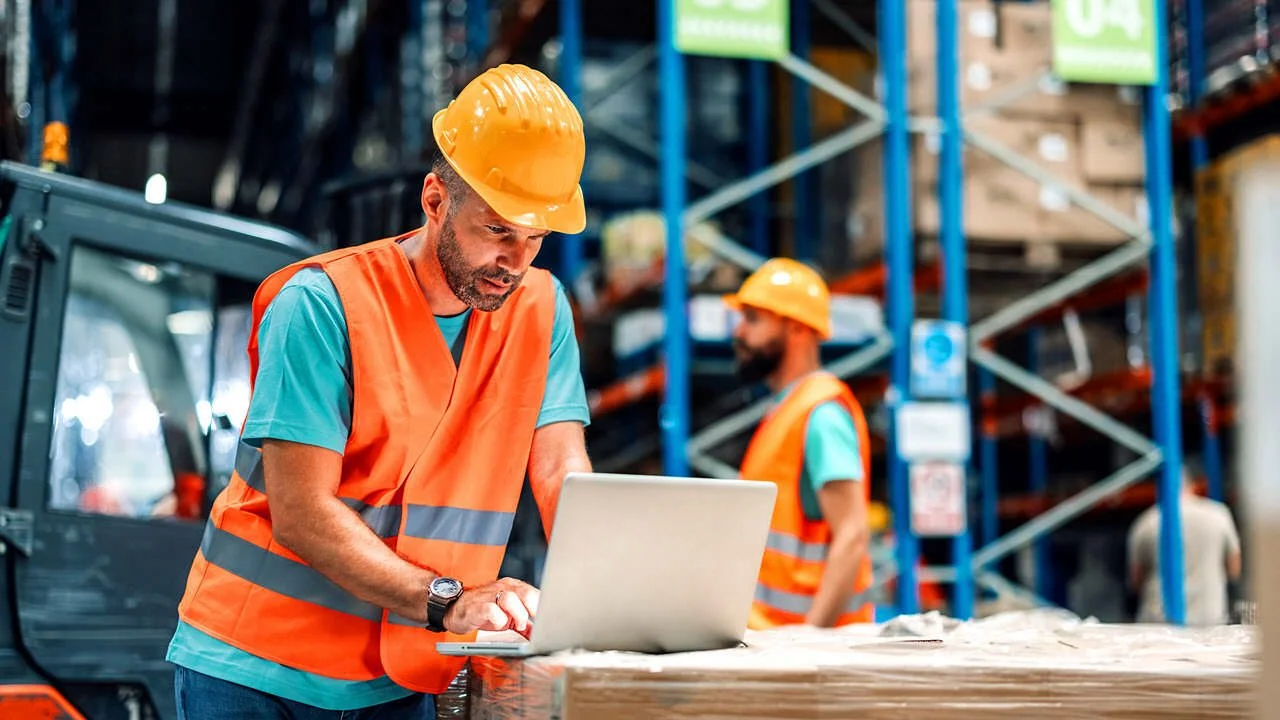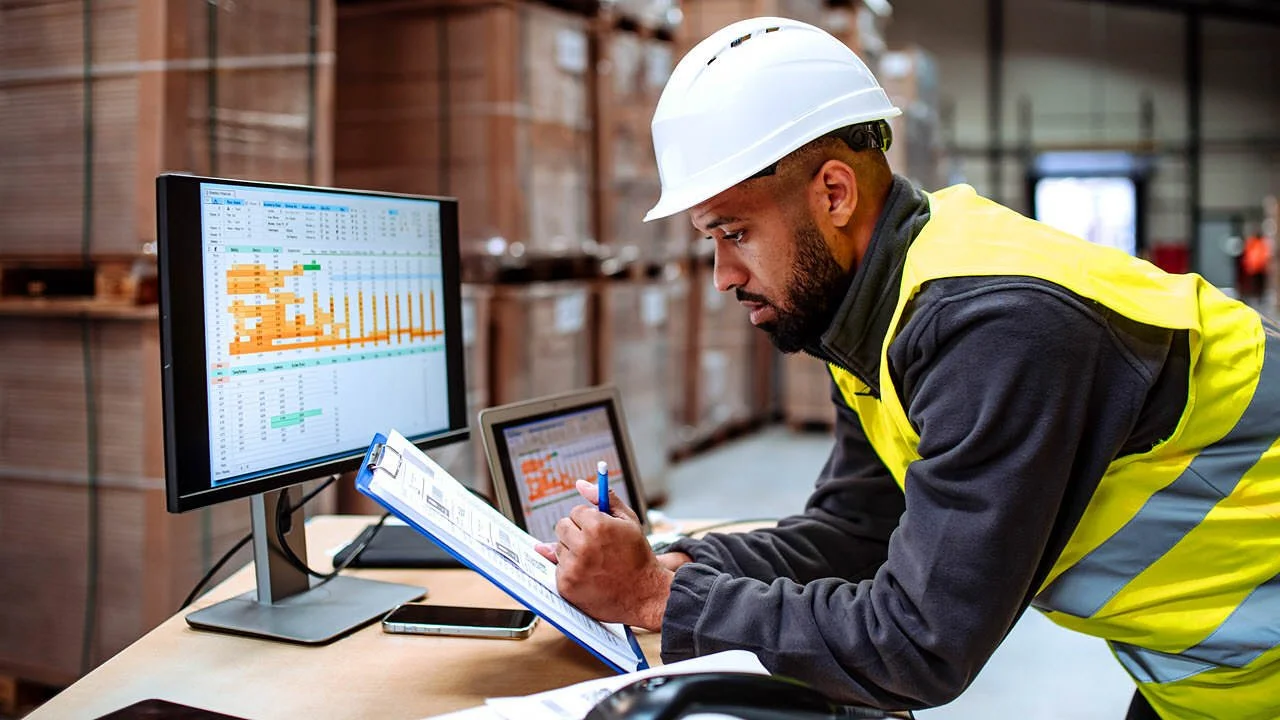UWB vs AI-Based Vision: Pedestrian Detection Technology Guide
The Critical Choice in Workplace Safety Technology
In high-risk industries where heavy machinery and pedestrians share workspace, the stakes couldn't be higher. A single collision can result in life-altering injuries, operational shutdowns, regulatory penalties, and damaged reputations. Yet many safety managers find themselves overwhelmed by the technical complexity of modern detection systems.
Two leading technologies have emerged as game-changers in pedestrian detection: Ultra-Wideband (UWB) and AI-based vision systems. While both promise enhanced safety outcomes, they take fundamentally different approaches to solving the same critical problem.
This comprehensive guide cuts through the technical jargon to help you understand which technology aligns with your operational reality, budget constraints, and long-term safety goals. Whether you're managing a dusty mining operation, a dynamic warehouse, or a busy construction site, the right choice can transform your safety program from reactive to proactive.
Success depends on matching technology capabilities to operational reality.
Understanding UWB Technology: Precision Through Radio Frequency
Ultra-Wideband technology represents a sophisticated approach to proximity detection, utilizing short-range radio frequency signals to create precise location awareness across your worksite.
How UWB Works
UWB systems create a network of communication between active tags worn by personnel and vehicles, and fixed anchor points installed throughout your facility. These tags continuously broadcast their position using ultra-precise timing measurements, enabling the system to calculate distances with centimeter-level accuracy.
When a tagged person enters a predefined danger zone around heavy equipment, the system immediately triggers alerts or automatic safety responses, such as equipment slowdowns or complete stops.
Key UWB Advantages
Unmatched Environmental Resilience: UWB signals penetrate through dust, fog, smoke, and other visibility-limiting conditions that plague many industrial environments. This makes UWB particularly valuable in mining operations, outdoor construction sites, and manufacturing facilities with airborne particles.
Comprehensive Asset Tracking: Beyond pedestrian safety, UWB can simultaneously track vehicles, equipment, and valuable assets, providing operational insights that extend beyond collision prevention.
Immediate Response Integration: UWB systems excel at triggering automatic braking systems and equipment shutdowns, providing split-second response times that can prevent accidents before human reaction time becomes a factor.
AI-Based Vision: Intelligence Through Visual Recognition
AI-based vision technology leverages the power of computer vision and machine learning to automatically identify and track pedestrians in real-time, without requiring any wearable devices.
AI-based systems generate rich datasets including behavioral patterns.
How AI-Based Vision Works
Vehicle-mounted cameras continuously capture and analyze the surrounding environment using advanced artificial intelligence algorithms. These systems can identify humans in various clothing, with or without personal protective equipment, and even distinguish between different types of objects in complex industrial environments.
When the AI confirms a pedestrian's presence in a danger zone, it triggers immediate alerts to operators while simultaneously logging the event for later analysis.
Key AI-Based Vision Advantages
Zero Compliance Dependencies: The system operates completely independently of human behavior, eliminating the common problem of workers forgetting, losing, or deliberately not wearing safety tags.
Advanced Data Analytics: AI-based systems generate rich datasets including behavioral patterns, heat maps of high-risk areas, time-stamped incident reports, and video evidence—transforming safety from a reactive discipline into a proactive strategy.
Simplified Scalability: Adding protection to new vehicles requires only camera installation, without the need for site-wide infrastructure changes or additional personnel equipment.
Comprehensive Technology Comparison
Detection Methodology and Reliability
UWB creates a "digital fence" around equipment based on tag proximity, making it exceptionally reliable for tagged objects but completely blind to untagged individuals. This binary approach works perfectly when compliance is absolute but creates dangerous gaps when workers forget or lose their tags.
AI-based vision provides comprehensive pedestrian detection regardless of equipment worn, but can be challenged by extreme environmental conditions such as heavy dust accumulation on camera lenses or direct sunlight glare.
For organizations evaluating these technologies, Riodatos' procurement services can help assess which approach best fits your specific operational challenges and compliance culture.
Infrastructure Requirements and Complexity
UWB demands a comprehensive ecosystem: active tags for every person and vehicle, strategically placed anchor points throughout the facility, and ongoing calibration to maintain accuracy. The initial setup requires careful site surveying and can be complex in large or irregularly shaped facilities.
AI-based vision simplifies infrastructure dramatically. Each vehicle requires only camera installation and processing unit mounting—typically completed in 3-4 hours per vehicle with minimal ongoing maintenance beyond periodic lens cleaning.
Cost Structure and Long-Term Economics
UWB systems involve ongoing operational expenses that scale with workforce size. Every additional worker requires a tag, battery replacement, and maintenance tracking. Large operations may find these recurring costs substantial over time.
AI-based vision features a one-time hardware cost per vehicle, making it more predictable for budgeting and generally more cost-effective as fleet size increases. Optional analytics subscriptions provide advanced reporting capabilities without mandatory recurring hardware costs.
User Behavior and Operational Impact
The success of UWB systems depends entirely on consistent tag usage. In busy, high-stress industrial environments, even dedicated safety-conscious workers sometimes forget tags, leave them in lockers, or experience equipment failures that create protection gaps.
AI-based vision eliminates this human factor entirely, operating consistently regardless of worker behavior, clothing choices, or equipment management practices.
Environmental Performance Characteristics
UWB's radio frequency signals excel in challenging visibility conditions—fog, dust storms, smoke, or darkness don't impact system performance. This makes UWB particularly valuable in mining operations, outdoor construction during weather events, or manufacturing processes that generate airborne particles.
AI-based vision can be impacted by extreme environmental conditions, though modern industrial-grade camera housings and automated diagnostic systems significantly mitigate these challenges. Advanced systems include lens heating, protective covers, and self-cleaning mechanisms.
Data Intelligence and Safety Analytics
UWB systems typically provide basic proximity event logging, sufficient for compliance reporting but limited for operational improvement insights.
AI-based vision systems generate comprehensive safety analytics including pedestrian traffic patterns, near-miss frequency analysis, behavioral trend identification, and video documentation. This rich data enables safety managers to identify problems before they become incidents and optimize workflows for inherent safety.
Organizations looking to leverage safety data for continuous improvement can benefit from Riodatos' implementation services to ensure maximum value from their technology investment.
AI-based vision systems generate comprehensive safety analytics including pedestrian traffic patterns.
Industry-Specific Applications and Recommendations
Mining Operations
Mining environments present unique challenges: extreme dust, variable lighting, remote locations, and the need to track both personnel and valuable equipment. UWB's environmental resilience and asset-tracking capabilities make it particularly well-suited for underground operations, open-pit sites, and processing facilities where visibility is consistently challenged.
Warehouse and Distribution Centers
Modern warehouses feature high pedestrian traffic, mixed vehicle types, and complex intersection points. AI-based vision excels in these dynamic environments, automatically detecting workers moving between aisles, identifying potential congestion points, and providing the rich data needed to optimize facility layouts for safety.
Construction Sites
Construction environments vary dramatically depending on project phase, weather conditions, and site characteristics. Urban construction sites with good visibility and high worker turnover may benefit from AI-based vision's compliance independence. Remote or dusty sites might favor UWB's environmental resilience.
Manufacturing Facilities
Manufacturing safety requirements depend heavily on specific processes and environmental conditions. Clean, well-lit assembly facilities may find AI-based vision ideal for its data insights and ease of use. Heavy industry with dust, sparks, or chemical processes might prioritize UWB's robust environmental performance.
Riodatos' industry expertise helps organizations navigate these sector-specific considerations to identify optimal safety technology solutions.
Implementation Strategy and Best Practices
Assessment and Planning Phase
Successful pedestrian detection implementation begins with a comprehensive risk assessment. Document current pedestrian-vehicle interaction points, evaluate environmental challenges, assess workforce compliance patterns, and define success metrics beyond basic incident reduction.
Consider conducting pilot programs in representative areas to evaluate real-world performance before facility-wide deployment.
Change Management and Training
Technology adoption succeeds or fails based on user acceptance. For UWB systems, develop robust tag management processes, create compliance incentives, and establish clear protocols for equipment issues. For AI-based vision, focus on operator training for alert interpretation and response procedures.
Integration with Existing Safety Systems
Modern pedestrian detection should complement, not replace, existing safety protocols. Evaluate integration opportunities with current safety management systems, maintenance scheduling, and operational reporting.
Riodatos' support services provide ongoing assistance to ensure your pedestrian detection system continues delivering optimal safety outcomes throughout its operational life.
Making Your Technology Decision
The choice between UWB and AI-based vision isn't about which technology is superior—it's about which technology best fits your operational reality, workforce characteristics, and strategic safety objectives.
Choose UWB When:
Environmental conditions regularly limit visibility (dust, fog, smoke)
Asset tracking beyond personnel is valuable for operations
Workforce compliance with wearable equipment is reliable
Immediate automatic equipment response is critical
Budget allows for ongoing tag and maintenance costs
Choose AI-Based Vision When:
Mixed-traffic environments with variable pedestrian patterns
Workforce compliance with wearable devices is inconsistent
Rich safety analytics and behavioral insights are valuable
Simplified installation and maintenance are priorities
Predictable, one-time hardware costs fit budget parameters
Pedestrian detection technology represents a critical safety investment.
Future-Proofing Your Safety Investment
Technology selection should consider not just current needs but future operational evolution. Will your workforce grow significantly? Are you planning facility expansions? Do you anticipate changing regulatory requirements?
AI-based vision generally offers more straightforward scalability and richer data for compliance reporting. UWB provides more comprehensive tracking capabilities that may support broader operational optimization initiatives.
Conclusion: Strategic Safety Technology Selection
Pedestrian detection technology represents a critical safety investment that impacts not just accident prevention but operational efficiency, insurance costs, regulatory compliance, and workforce confidence. The decision between UWB and AI-based vision should be based on careful evaluation of your specific environment, operational requirements, and long-term strategy.
Both technologies offer proven safety benefits when properly implemented and maintained. Success depends on matching technology capabilities to operational reality, ensuring proper training and adoption, and leveraging system data for continuous safety improvement.
The best pedestrian detection system is the one your workers will use consistently, that operates reliably in your specific environment, and that provides the insights needed to evolve from reactive safety management to proactive risk prevention.
Ready to enhance your workplace safety with advanced pedestrian detection technology? Contact Riodatos to discuss how UWB or AI-based vision can be tailored to your specific operational needs and safety objectives.
—
#WorkplaceSafety #PedestrianDetection #UWB #AIVision #ConstructionSafety #SafetyTech #CollisionPrevention #IndustrialSafety #SafetyManagement #SafetyFirst





